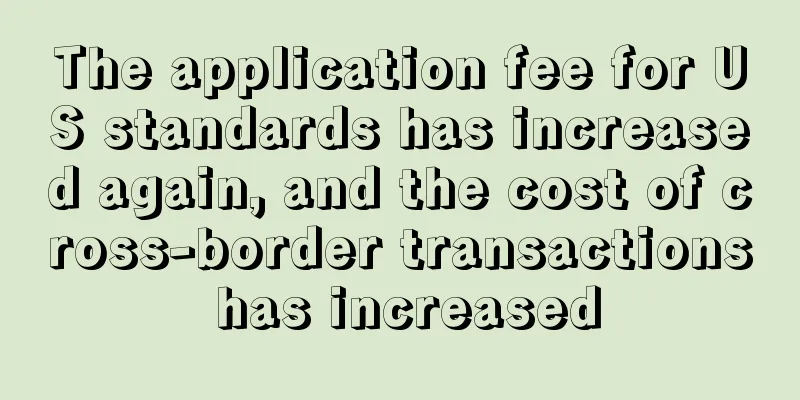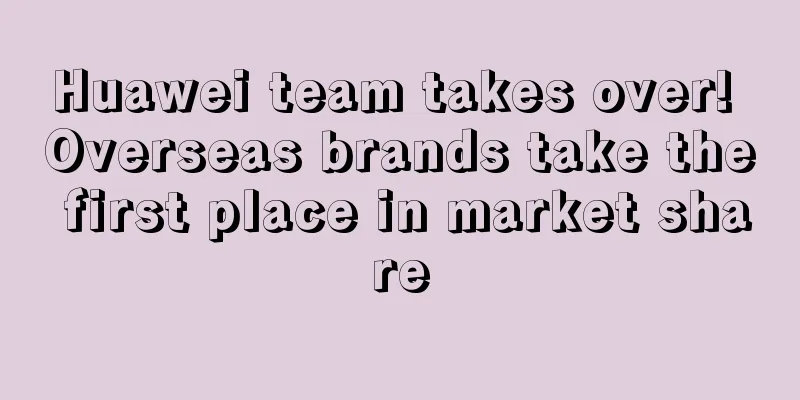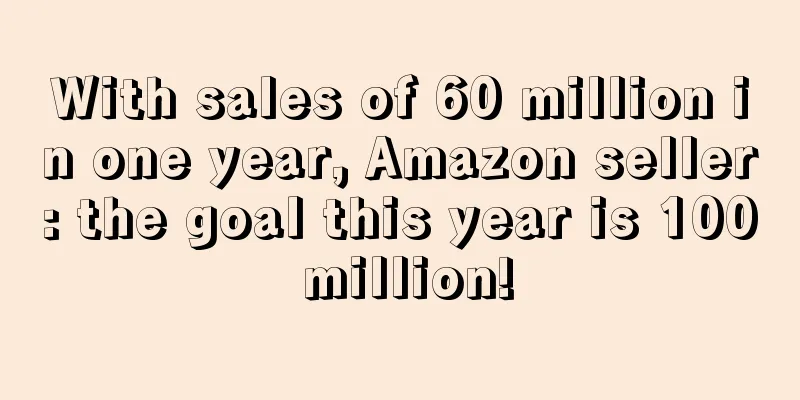The application fee for US standards has increased again, and the cost of cross-border transactions has increased

|
The cost of going overseas has been rising year after year. Not long ago, Amazon just cut a price on its sellers for warehousing configuration service fees, and now new fees are coming again. This time it is the U.S. Trademark and Patent Office that is taking action.
Trademark and patent application fees both increased
On April 20 last year ( 2023), Kathi Vidal, Director of the USPTO (U.S. Patent and Trademark Office), wrote to PPAC to explain the USPTO's plan to officially increase U.S. patent fees around January 2025.
At that time, Een.com also followed up on the report. Due to the long buffer time, sellers did not pay much attention. But at the end of last month, the USPTO officially announced the draft fee adjustment. The draft decided to increase the US trademark/patent official fees starting in fiscal year 2025 (October 2024).
The USPTO said that there are two main reasons for the fee adjustment. First, the previously passed "Unleashing American Innovators Act" provided large fee reductions for small and micro entities, which resulted in the USPTO's future revenue being lower than expected; second, due to the impact of US inflation, the USPTO's operating costs increased.
In order to maintain normal operations, the price has increased significantly. The following is the details of the increase in trademark/patent application fees:
Trademark official fees:
1. The official application fee for new trademark applications has been increased from US$250 per class to US$350 per class, a 40% increase. 2. The official fee for submitting an intention-to-use basis and submitting evidence of use will be increased from US$100/category to US$150/category, a 50% increase. 3. The extension application for intention to use and evidence of use can be extended 6 times, and the official fee for each extension application is US$125 per category. The official fee for the 1st to 3rd extension remains unchanged, and the official fee for the 4th to 6th extension will be US$250 per category.
Patent official fees:
1. The overall fee will increase by 5%, and the application, search and examination fees will increase by another 5%. The total fee for the entire process will increase from US$1,820 to around US$2,000. 2. The official fee for design patents increased by 48% to US$2,600.
It is worth noting that the US Trademark Law stipulates that a statement of use must be submitted between the fifth and sixth years from the date of registration to prove that the registered trademark has been used continuously during these five years, otherwise the registered trademark will be revoked (after that, a sworn statement must be submitted every five years or so). This is a maintenance system for US trademarks, also known as the US trademark oath.
This fee has also increased this time. The official fee for trademark oath in the 5th and 6th years has increased from US$225/class to US$300/class, and the official fee for trademark oath in the 9th and 10th years has increased from US$200/class to US$250/class.
In addition, trademark renewal is required within the 9th to 10th year from the date of successful trademark registration and every 10 years thereafter. The fee for this item has also been adjusted this time, from US$300/class to US$350/class.
In addition, there are two items with relatively large increases in this draft: one is the special request to the Director of the Trademark Office, which will increase from the current US$250 to US$400; the other is the revival of abandoned trademark applications (which must be submitted within two months of the issuance of the abandonment notice), which will increase from the current US$150 to US$250.
According to the USPTO's price increase plan, the entire official fee adjustment process will be divided into the following stages:
May 18, 2023: PPAC hearing to conduct public discussion and collect opinions on the official fee adjustment plan. January-March 2024: Publish a proposed notice of rulemaking and announce specific price increase plans and details. March-June 2024: A 60-day public comment period to provide the public with an opportunity to provide feedback. October-December 2024: Issue final rules to determine the final plan for official fee adjustments. January 2025: Estimated effective date for fee changes, when new official fees will be implemented.
It can be seen that there is not much time left for sellers. Those who have trademark /patent application plans need to make arrangements early, especially sellers with a large number of applications. The cost will increase a lot after the price increase. For example, a seller applies for 20 trademarks and appearance patents each year. After the fee adjustment, the expenditure will increase by more than 120,000 yuan.
Seeing this, I believe many sellers have started to complain. However, the price increase of US trademarks/patents is not all bad. As we all know, cross-border claims are rampant now. The cost of trademark/patent registration applications has been raised a lot, which will have a certain inhibitory effect on them.
American Standard continues to make headlines
For sellers, the most frightening thing about trademarks is not the rising costs, but the fact that the trademarks they applied for at great expense ended up being a huge disaster for them. In recent years, trademark failures have occurred frequently, causing serious damage to sellers’ businesses.
In 2021, the USPTO suddenly issued a sanctions order, announcing that more than 15,000 U.S. trademarks applied for by Shenzhen Huanyi Intellectual Property Co., Ltd. were all invalidated and permanently deleted from the USPTO database, and it was permanently prohibited from submitting trademark-related documents to the USPTO.
Since then, similar incidents have occurred one after another, some of which involved tens of thousands of trademarks. The latest incident occurred not long ago ( March this year), when the USPTO issued an announcement about a lawyer being investigated, and many trademark companies in the industry were involved.
Nowadays, the trend of going overseas is rising. According to statistics, the number of cross-border e-commerce export companies in Shenzhen alone exceeds 150,000. In order to establish their own brand identity in overseas markets, prevent others from plagiarizing or imitating, and increase consumers' trust and recognition of their products or services, most of these companies will apply for trademarks in the target market.
In addition, with the increasing awareness of intellectual property rights, overseas companies are paying more and more attention to the deployment of trademarks/patents, and the number of trademark/patent applications in various countries is growing rapidly.
Intellectual property management company Anaqua analyzed patent data announced by the U.S. Patent and Trademark Office in 2023 and found that the total number of applications for U.S. standards in 2023 reached 348,774, an increase from 347,408 in 2022.
In addition, clarivate, a global data analysis service company , stated that the total number of European trademark (EUTM) applications in 2023 (144,214 applications) increased by 4% compared to 2022 (138,607 applications).
However, as the number of trademark applications increases, more risks also arise. What can sellers do to avoid falling into traps?
Domestic sellers’ trademark /patent application work is mostly entrusted to service providers, so it is important to choose a reliable service provider. Seller “Amazon丶程” said that when selecting a service provider, the following aspects can be considered:
First, look at the establishment time. The registration time of American standard is more than one year, so it is not recommended to register for less than 2 years.
Trademarks /patents are a compulsory course for Chinese cross-border e-commerce sellers. If a product does not have trademark/patent protection, it will be in a passive state when encountering intellectual property disputes in the future. However, if you want to find a service provider to apply for an agent, you must do a good job of assessment. US Trademark |
<<: Another "Assassin" category becomes popular overseas!
>>: Sales volume exceeds 200 million! 3C digital accessories become the industry leader
Recommend
Amazon scales back Prime Air operations in UK
It is reported that Amazon recently closed part o...
What is Guangzhou Tianfan International Logistics Co., Ltd.? Guangzhou Tianfan International Logistics Co., Ltd. Review, Features
Guangzhou Tianfan International Logistics Co., Ltd...
What is Jincheng Logistics Network? Jincheng Logistics Network Review, Features
Jincheng Logistics Network was established in 2003...
Tmall Double 11 saw triple-digit growth in many industry sectors, and small and medium-sized businesses achieved greater certainty of return on investment
Data from Taobao and Tmall show that from 8pm on ...
Search volume increased by 797% as the hottest trends for autumn home decoration were revealed
With the arrival of autumn, the hot and dry atmos...
Operations salary is criticized: the starting salary is 10K just to know the basics!
Banggood is a well-known leader in the industry, ...
TikTok deleted more than 3.5 million advertising videos in half a year due to violation of advertising policies
According to foreign media reports, TikTok releas...
UK retail sales fall
UK retail sales fell in August, down 0.9% from Ju...
81% of consumers are willing to participate in loyalty programs, and discounts are the most popular form!
Enhancing customer loyalty has been a key priorit...
What is YouTube? YouTube Review, Features
YouTube is the world's largest video sharing ...
What is Chengdu Cross-border E-commerce Association? Chengdu Cross-border E-commerce Association Review, Features
The Chengdu Cross-border E-commerce Association of...
A left-behind peasant woman earns over 10,000 yuan a month through Facebook, and cross-border e-commerce is popular in the village!
During the National Day in 2020, a group of south...
Orders in many categories have been cut in half! Amazon's ACOS has exploded
In order to get rid of this situation, many selle...
Etsy announces support for sellers to explore the Indian market
While major e-commerce platforms are working to h...
66% of retailers increase online investment! Australia's e-commerce process is accelerating
With online retail growing rapidly in 2020, two-t...









